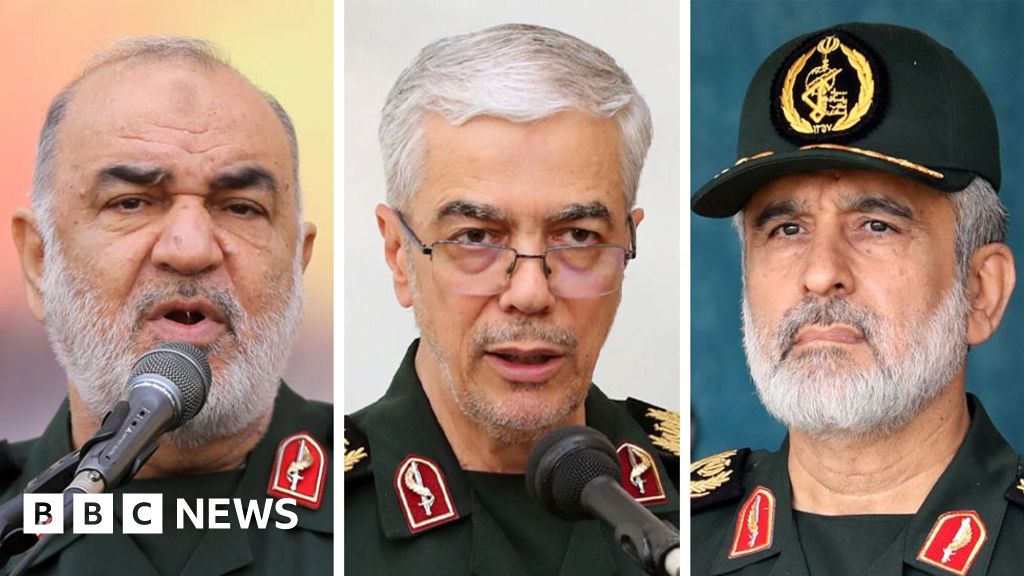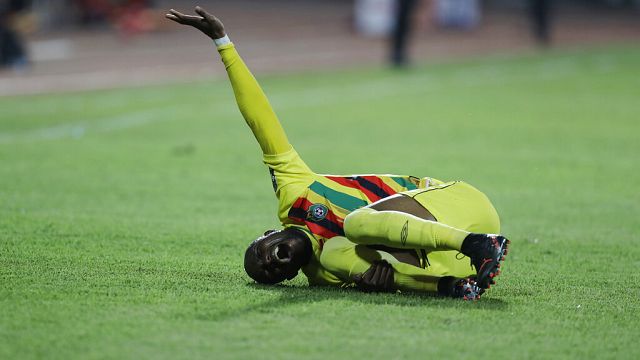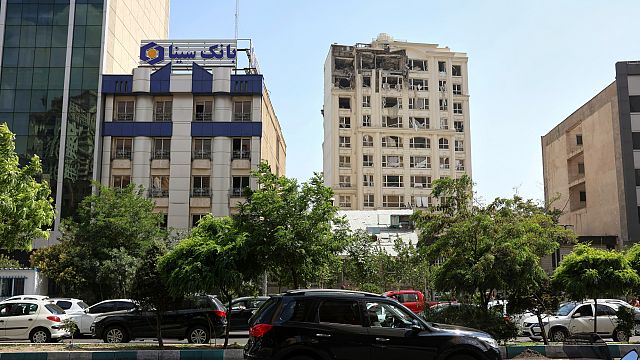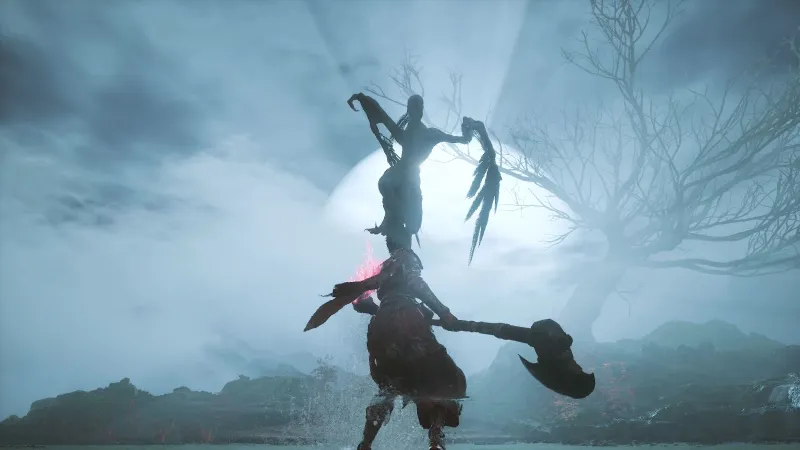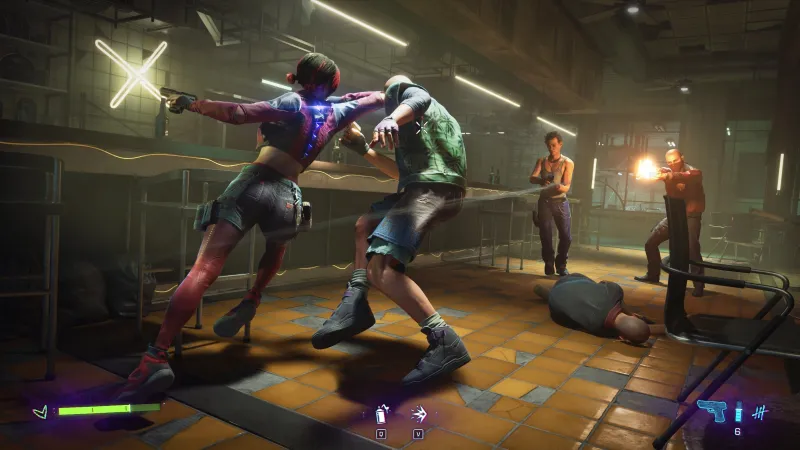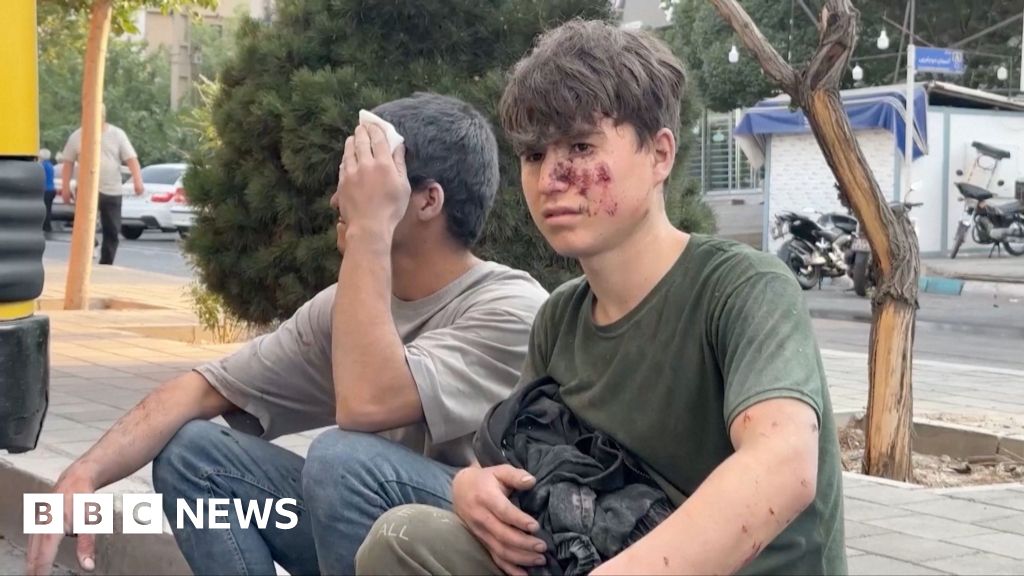Hundreds Dead in Air India Plane Crash


The London-bound Boeing Dreamliner went down moments after takeoff in Ahmedabad, India, with 242 people aboard. Dozens more on the ground perished as the plane exploded on the campus of a medical college. An Air India flight bound for London crashed only seconds after takeoff in western India on Thursday, plunging into a local medical college and killing more than 260 people, officials said. It was India’s worst aviation disaster since 1996. Video verified by The New York Times shows the plane taking off and then descending slowly over a cluster of buildings as if it were gliding before a large fireball erupts on the horizon. It did not tumble or plunge out of the sky, and was in the air for less than a minute, the video shows. Air India confirmed that 241 people — all but one person on the plane — were killed, and that one person, a British citizen, had survived. A video clip circulating on Indian news outlets shows a man with injuries on his face and blood on his white shirt limping toward an ambulance, saying he came from “inside” the plane. The crash’s sole survivor was later identified by his brother as Viswash Kumar Ramesh. “He got off the plane and he video-called my dad and said, ‘Our plane crashed — I have no idea how I got outside, or how I survived,’” the brother, Nayan Ramesh, said in an interview. Viswash Kumar Ramesh had been traveling on the plane with another brother, Ajay Ramesh. “He was like, ‘I can’t see my brother — I can’t see any other passengers,’” Nayan Ramesh said, quoting his brother on the video call. “I don’t know how I am alive,” Nayan Ramesh said his brother added. The jet, a Boeing 787-8 Dreamliner bound for London Gatwick Airport, was carrying 230 passengers and 12 crew members when it crashed at 1:38 p.m. local time, just about a mile southwest of Sardar Vallabhbhai Patel International Airport, in the city of Ahmedabad. A senior police official in Ahmedabad said 269 bodies had been brought to the main hospital. The official, Vishakha Dabral, cautioned that the exact toll might change after DNA testing. Rescue personnel at the crash site, as well as doctors and security officials, said that as many as three dozen people caught in the path of the crashing plane might have been killed. Officials at the site said the jet appeared to have skidded along the ground, damaging buildings, before it burst into flames. At least five students at B.J. Medical College were killed, according to Minakshi Parikh, the dean of college, who said the plane had hit a dining hall where 60 to 80 students had been eating lunch. “Most of the students escaped, but 10 or 12 were trapped in the fire,” she said. Amit Shah, India’s home minister, said the plane had been carrying 125,000 liters, or 33,000 gallons, of fuel. “The temperature was so high that there was no chance to save people,” he said. After the crash, plumes of smoke billowed from the wreckage as firefighters doused charred buildings. The ripped tail of the plane could be seen jutting out of the side of a building, and a wing lay in a road. Hundreds of police officers and emergency workers were still at the scene hours later, using heavy equipment to untangle pieces of the aircraft from a building. Medics and rescue workers said it was difficult to navigate the smoke and the rubble as they searched for bodies. The flight, Air India 171, was carrying 169 Indian citizens, 53 Britons, seven Portuguese and one Canadian. Prime Minister Narendra Modi of India said in a statement that the crash was “heartbreaking beyond words.” The British government said it was working with the Indian authorities to “urgently establish the facts,” and had opened a hotline for British citizens seeking information about the crash. Prime Minister Keir Starmer said that scenes of the crash were “devastating.” The United States and Britain both said they would send investigators to India. “Anything we can do, we will be over there immediately,” President Trump said at the White House. It was not immediately clear how many flights the plane had completed, although it was built in 2013. The crash posed yet another hurdle for Boeing, as it struggles to recover from a series of crashes and embarrassing mishaps that have plagued its 737 line of planes, jeopardizing what its new chief executive, Kelly Ortberg, had called “its turnaround year.” And it immediately renewed scrutiny of the Dreamliner, which has been the focus of safety concerns, but had not been involved in any fatal accidents, according to the Aviation Safety Network. In April 2024, the Federal Aviation Administration said that it was looking into claims by a Boeing engineer who said that parts of the 787 Dreamliner fuselage were improperly fastened at the company’s factory in South Carolina. The engineer, Sam Salehpour, said that the fuselage could break apart midflight after thousands of trips. He added that large pieces came from different manufacturers, and were not exactly the same shape when they fit together. Boeing said it had done extensive testing on the Dreamliner and “determined that this is not an immediate safety-of-flight issue” and that it was “fully confident” in the plane. Before that, Boeing had paused Dreamliner deliveries for more than a year, until the summer of 2022, when the F. A.A. approved a plan to address paper-thin gaps in the plane’s body and other concerns. Boeing said at the time that none of the problems had an immediate impact on the safety of Dreamliners. About 1,100 Dreamliners are currently in service worldwide. Air India flies nearly three dozen of the jets, according to Cirium, an aviation data firm. In a statement on Thursday, Mr. Ortberg expressed condolences to the families of those on the plane and “everyone affected in Ahmedabad.” He added that a Boeing team was ready to support Indian investigators. Natarajan Chandrasekaran, the chairman of Air India, said that the firm was focused on supporting the victims’ families and emergency response teams. Officials looking into the crash will have no shortage of questions, said Greg Feith, a former investigator at the National Transportation Safety Board. “Did they properly configure the airplane when it took off?” he said. “What was occurring with them? Was there a loss of thrust? Was there fuel contamination? Fuel starvation where both engines weren’t getting fuel that would have caused a loss of thrust on both engines?” In the video, the plane’s descent appeared to be controlled, which suggests that the pilots may have been trying to slow it down, said Ben Berman, a safety consultant who is also a former airline pilot and federal crash investigator in the United States. Heat was another consideration. The temperature was more than 100 degrees in Ahmedabad, and hot weather makes takeoffs more difficult because engines produce less thrust and warm air is less dense, making it harder for airplanes to generate lift. The crash came as Air India, the country’s flagship carrier, had been working to improve its safety record. Its last major crash was in 2020, when a passenger plane operated by Air India Express, a subsidiary, skidded and cracked in half on a rain-soaked runway, killing at least 17 people in the southern Indian state of Kerala. In 2010, an Air India Express plane overshot a hilltop runway in Mangalore, in the western state of Karnataka, killing more than 150 people. At the time, many experts expressed concerns about the safety of India’s rapidly expanding aviation sector — in 2009, there were three near-misses at the Mumbai airport — and raised questions about Air India’s professionalism. Information about the passengers who were on the Air India plane that crashed on Thursday was just beginning to emerge. One of the them was Vijay Rupani, former chief minister of Gujarat, who led the state in western India until 2021, according to a passenger list confirmed by officials of his party. A Muslim community group in Gloucester, England, said it was mourning the death of three others who had been on the plane — Akeel Nanabawa, his wife Hannaa and their daughter Sara. All three names appeared on a passenger manifest viewed by The Times. Reporting was contributed by Sanjana Varghese, Niraj Chokshi, Isabella Kwai, John Yoon, Jacob Judah, Amelia Nierenberg, Lizzie Dearden, Aric Toler and Hari Kumar.
What's Your Reaction?
 Like
0
Like
0
 Dislike
0
Dislike
0
 Love
0
Love
0
 Funny
0
Funny
0
 Angry
0
Angry
0
 Sad
0
Sad
0
 Wow
0
Wow
0



